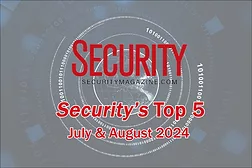Home » Keywords: » gun violence
Items Tagged with 'gun violence'
ARTICLES
Education industry security leader shares things to consider after a major incident.
Read More
Security Talk
Reflecting on tragedy: What school shootings teach us about safety and prevention
Education security expert shares key considerations for schools after a major incident.
March 17, 2025
Education & Training
Active shooter preparedness: Past, present and future
Security leader discusses what can be learned from past active shooter incidents.
October 10, 2024
Security Talk
Tracking school safety trends & funding post-Uvalde
School safety leaders across all 50 states have invested in security strategies to protect educational communities & facilities from threats.
February 17, 2023
Sign-up to receive top management & result-driven techniques in the industry.
Join over 20,000+ industry leaders who receive our premium content.
SIGN UP TODAY!Copyright ©2025. All Rights Reserved BNP Media.
Design, CMS, Hosting & Web Development :: ePublishing












